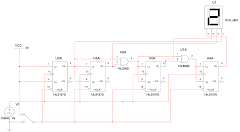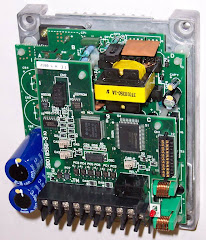Datasheet
A datasheet is a document summarizing the performance and other characteristics of a component (e.g. an electronic component) a sub-system (e.g. a power supply) or software in sufficient detail to be used by a design engineer to design the component into a system. Typically a datasheet is created by system manufacturer and begins with an introductory page describing the rest of the document, followed by listings of specific components, with further information on the connectivity of the devices. In cases where there is relevant source code to include it is usually attached near the end of the document or separated into another file.
Contents
1 Typical datasheet information
2 Application notes
2.1 Typical details in PC datasheet
3 See also
4 External links
Typical datasheet information
A typical datasheet for an electronic component contains most of the following information:
manufacturer's name
product number and name
a list of available package formats (with images) and ordering codes
notable device properties
a short functional description
pin connection diagram
absolute minimum, maximum ratings (supply voltage, power consumption, input currents, temperatures for storage, operating, soldering, etc)
recommended operating conditions (as absolute minimum, maximum ratings)
a table of DC specifications (various temperatures, supply voltages, input currents etc)
a table of AC specifications (various temperatures, supply voltages, frequencies etc)
an input/output wave shape diagram
physical device diagram showing minimum/typical/maximum physical dimensions, including contact locations and sizes
test circuit
ordering codes for differing packages and performance criteria
liability disclaimer regarding device use in high risk environments such as nuclear power stations and life-critical systems
application recommendations, such as required filter capacitors, circuit board layout, etc.
The datasheet sometimes contains circuit diagrams of typical use, however this information is often placed in a separate application note, with a high level of detail.
Historically, datasheets were typically available in a databook containing many data sheets, usually grouped by manufacturer or general type. Nowadays, they are also available from the Internet in table form or downloadable PDF format.
Application notes
An application note is a document which gives more specific details on using a component in a specific application, or relating to a particular process, eg the physical assembly of a product containing the component. Application notes are especially useful for giving guidance on more unusual uses of a particular component, which would be irrelevant to many readers of the more widely read datasheet.
Application notes can either be appended to a datasheet, or presented as a separate document.
Typical details in PC datasheet
Following are details commonly listed on personal computer datasheets:
Number of ports
IEEE 1394, SPDIF, PS/2, Serial, USB, Parallel, LAN
Expansion bays
5.25 inch bays
3.5 inch bays
Mainboard
CPU socket
Front side bus (FSB)
Back side bus (BSB)
Chipset
North bridge
South bridge
Random access memory (RAM) slots
Peripheral Component Interconnect (PCI) buses and slots
ATA (IDE) interfaces
Fans and temperature monitoring
Integrated graphics controllers
Integrated LAN interfaces
BIOS
Form factor
Graphics card
AGP type
Memory
Audio card
Hardware compatibility requirements and basic setup details for computer device driverss
See also
Personal computer
DatasheetArchive
External links
Application Notes and Data Sheets at the Open Directory Project
This electronics-related article is a stub. You can help Wikipedia by expanding it.
Subscribe to:
Post Comments (Atom)





No comments:
Post a Comment